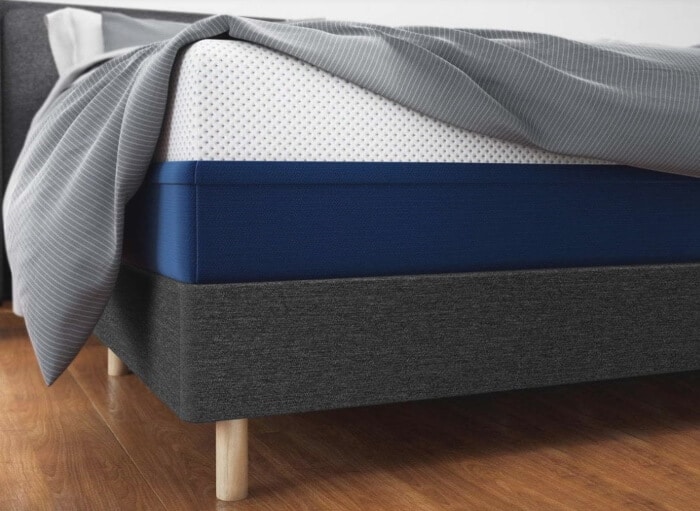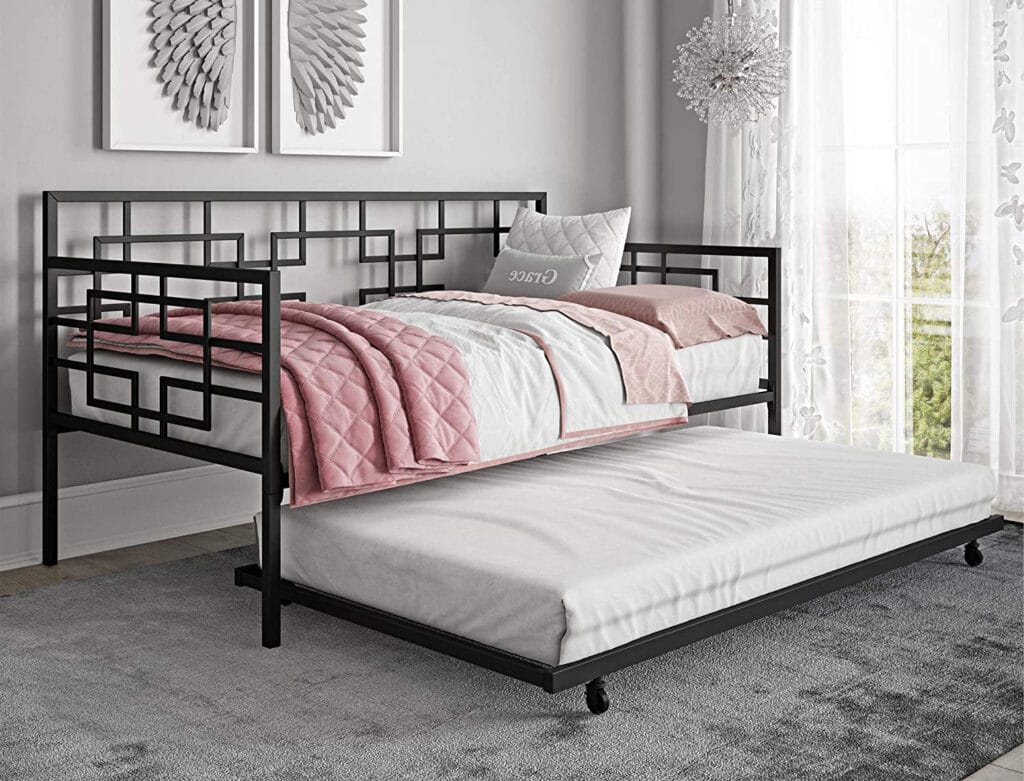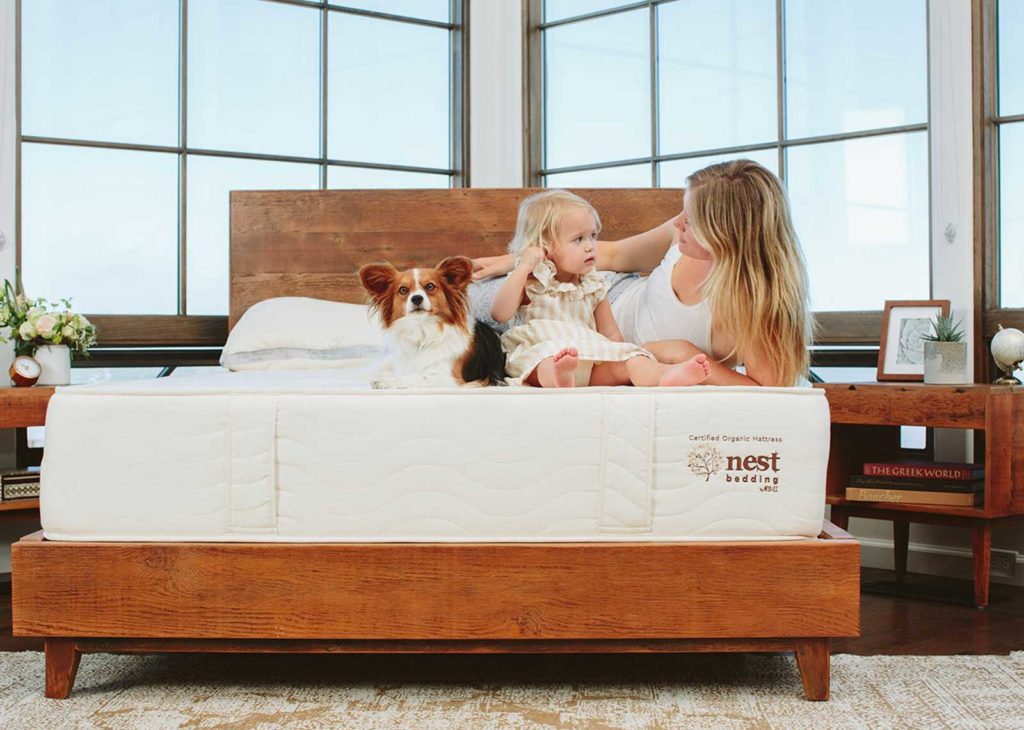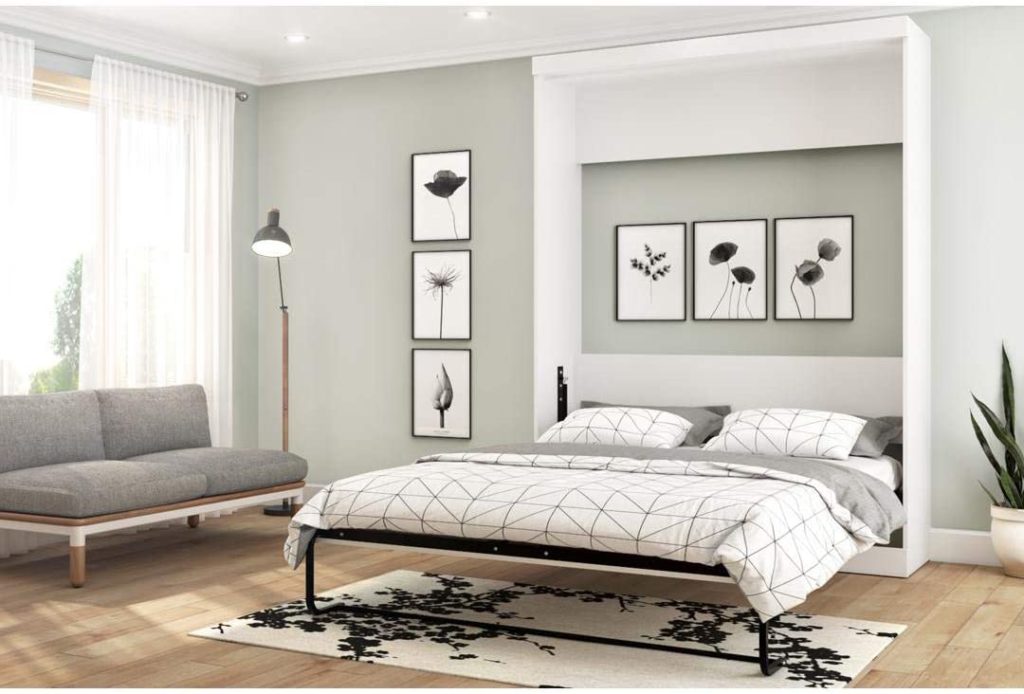

You must get your bed and accessories right for the perfect night sleep. A Bunkie board and box spring are some of the essential bed accessories you need for superior comfort. Essentially, a Bunkie board is a flat wooden mattress foundation. They are used as an alternative to a slat, box spring or piece of plywood and are placed under the mattress to provide proper support. A box spring, on the other hand, is more of a piece of furniture about 6 inches tall that offers minimal support to a mattress.
Most times, a Bunkie board can replace a box spring on different types of beds and mattresses because they offer support to the mattress without adding to the existing bulkiness or height of the bed. Before buying either the Bunkie board or box spring, you must first assess your needs. Do you really need a box spring? And if you have one already, do you really need a Bunkie board? In this article we have provided a useful showdown of the never-ending Bunkie board vs. box spring debacle that will help you make the best informed choice.
A Bunkie board is basically just a type of flat board made of wood, particleboard, plywood or metal and is designed to fit between your mattress and the surface it rests on. They are mostly used when there isn’t enough support from an already existing bed setup.
How did Bunkie boards become a thing?
From their name, Bunkie boards were originally used to provide a base for a bunk bed base. The traditional innerspring mattresses, which were the standard mattresses for a long time, needed a box spring for support, and when bunk beds were invented, someone had to come up with a reasonable solution. Thick box springs could not fit well on either the top or lower bunk beds. With a mattress and box spring, someone would hit their head on the ceiling when they sat up because box springs add height to the bed. Bunkie boards were the perfect solution to having the bunk bed mattresses sit so low.
The very first Bunkie boards were made differently from the present day ones. They featured one piece of plywood or solid wood that provided support to the entire mattress. Nowadays, Bunkie boards are made of wood stripes in different lengths, widths and thicknesses. They work with all mattress types and sizes.
So, why would you need a Bunkie board? Well, experts recommend using Bunkie boards with the modern mattresses and hybrid mattresses because the memory foam, poly-foam or latex foam used to make them can sag if not well-supported. If your bed doesn’t have a solid bed frame with a solid base, then you need to invest in the best Bunkie board.
The Zinus Deepak remains the most acclaimed Bunkie board on the market. It boasts a sturdy 1.6-inch build and can be used with bunk beds, daybeds and platform beds. It offers proper support for different types of mattresses.
A box spring is like a piece of furniture filled with metal coils or steel. A typical box spring looks like a boxy mattress. Box springs are made with heavy wood to create a strong, sturdy frame that is filled with springs or coils that induce a bounce. They are then covered with material like a mattress.
Box springs add height and bulkiness to the existing bed setup. This is both advantageous and disadvantageous. The advantage is that it raises your bed higher from the floor protecting you from bacteria, allergens and dust mites on the floor. According to experts, raising your bed reduces your exposure to allergens and bacteria that may cause respiratory issues and other diseases preventing you from getting the perfect night sleep.
Box springs are very heavy and hard to move around once set up. There are thinner models, best suited for people who live alone and wouldn’t have an extra pair of hands to move the unit or people who move around a lot.
Traditional box springs constituted layers with spring coils that worked in tandem to distribute weight and pressure well. Today’s box springs are typical wood or metal box with a cloth cover. They don’t add much stability or support.
In fact, most box springs are used with a Bunkie board to create a solid surface for a mattress. You only have to be sure that the box spring can handle the weight of a Bunkie board and mattress.
According to popular reviews, the Zinus 9-inch Metal Smart Box spring is one of the best box springs worth investing in. It features a durably engineered steel interior frame and a polyester cover. Its 9-inch profile is perfect for shorter mattresses and anyone who loves their bed higher off the floor.
You can replace a box spring with a Bunkie board for different types of mattresses and bed setups. You only need to consider a few crucial factors like the cost of the Bunkie board, its size, the material used to make it and how it interacts with different types of mattresses. The main reason why you would want to replace a box spring with a Bunkie board is, the latter provides proper support to your mattress without adding to the height and bulk of the existing bed setup.
Here are some more solid reasons for replacing a box spring with a Bunkie board:
Some of the most common materials used to make Bunkie boards include; plywood, particleboard, metal and solid wood. The diversity of the materials allows you to choose one that suits your needs.
Particleboard is a lightweight material made from waste materials like wood shavings, sawdust, and wood chips. A particleboard Bunkie board is the ultimate option for anyone looking for an inexpensive support for their mattress.
Plywood is much sturdier and more durable than particleboard thus more expensive. It still is cheaper than other Bunkie board materials though. Plus, you can easily DIY your Bunkie board with plywood.
Solid wood is heavier, more durable, and expensive compared to engineered wood composites like plywood and particleboard because it has been cut directly from a tree.
Metal is the most expensive and sturdiest of all the Bunkie board materials. Bunkie boards made of metal feature a premium metal frame covered in fabric that offers superior support to a mattress.
Another reason why you can replace a box spring with a Bunkie board is easy portability. They are incredibly lightweight. A typical Bunkie board weighs about 30 pounds while a standard box spring weighs about 60 to 100 pounds. If you live alone, it is wiser to get a Bunkie board as you can move it from one place to another without needing help.
Also, box springs are pretty bulky. Most of them measure about 9 inches in height. The huge size together with their weight makes the less portable. Bunkie boards, on the other hand, only measure 1 to 3 inches in height.
Bunkie boards are designed to suit all types of mattresses. They are great for hybrid, late and memory foam mattresses. They also provide great support for soft mattresses by helping them retain their shapes and quality for a long time.
Box springs were originally invented for the purpose of absorbing shock when mattresses were made thinner. Today’s mattresses are thick enough and don’t require any shock absorbing support. The only mattresses that might need the support of a box spring are the traditional 2-sided mattresses.
If budget plays a huge role in making a sound decision for you then you should consider a Bunkie board over a box spring. On top of being more modern and comfortable, Bunkie boards are much cheaper than box springs. You can buy a Bunkie board and a comfortable high-quality mattress at the price point of a traditional boo spring.
A typical Bunkie board costs anything between 50 and 150 dollars. The prices are affected by size, materials used and the design of the Bunkie board. A king size will cost more than a twin Bunkie board. Also, if it has decorative features or aesthetically appealing stains and finishes it is likely to be costlier.
If you have just bought a new foam mattress and your bed has a solid foundation for placing it like a box spring, then a Bunkie bed is not necessary. However, if you want to prevent it from sagging by giving it the ultimate support, you can get a Bunkie board and place it on top of your box spring to create a solid foundation for it.
The Bunkie board will also lift your mattress higher without compromising its structure. Anyone who loves their bed being a bit higher from the floor would appreciate this. You can opt for either a 1, 2, or 3-inch Bunkie board depending on how high you want your bed.
Before adding a Bunkie board on top a box spring, ensure your box spring can handle the weight of the Bunkie bed together with the mattress.
All in all, box springs are more durable than Bunkie boards. When you combine the two, you would make the most of their pros and enjoy the comfort and support they both offer.
Everyone deserves the perfect sleep setup. In this article, we have provided a detailed showdown of the Bunkie board vs, box spring debate. The information we have provided should help you analyze your needs for either of the bed accessories as well as get the perfect one that suits you. If you are the kind of person that moves around a lot, then you’d be safer with a Bunkie bed but if you have a permanent residence then you better go with a box spring because they last longer.
Your budget also matters. If you have a lean budget then a Bunkie board is your prime choice. You can even DIY a Bunkie bed with plywood. Box springs are a thing of the past but they still shine when it comes to durability and raising the height of the bed.





